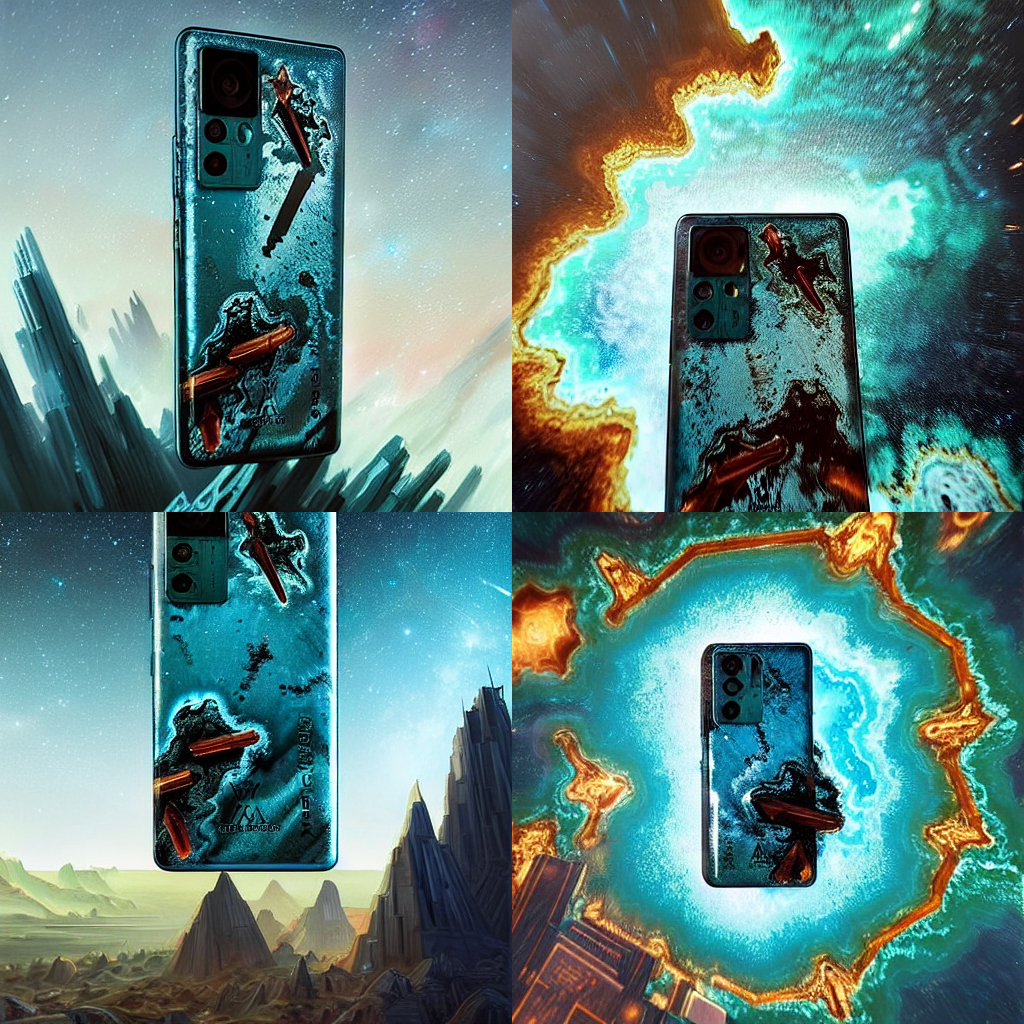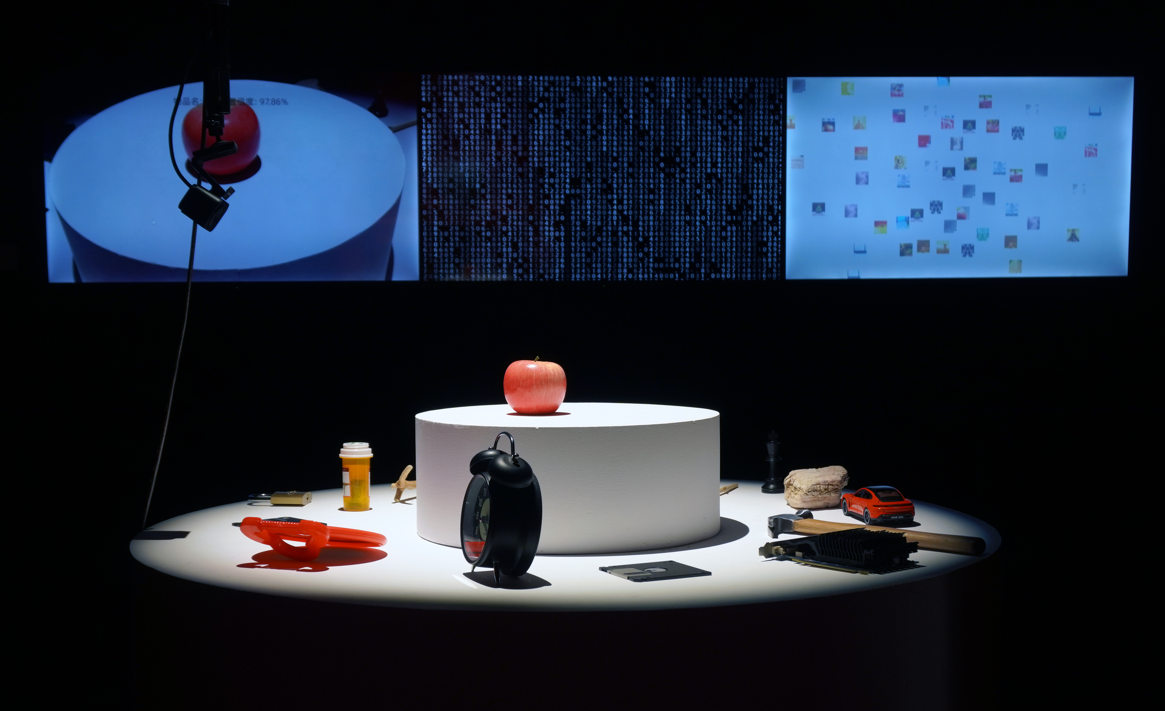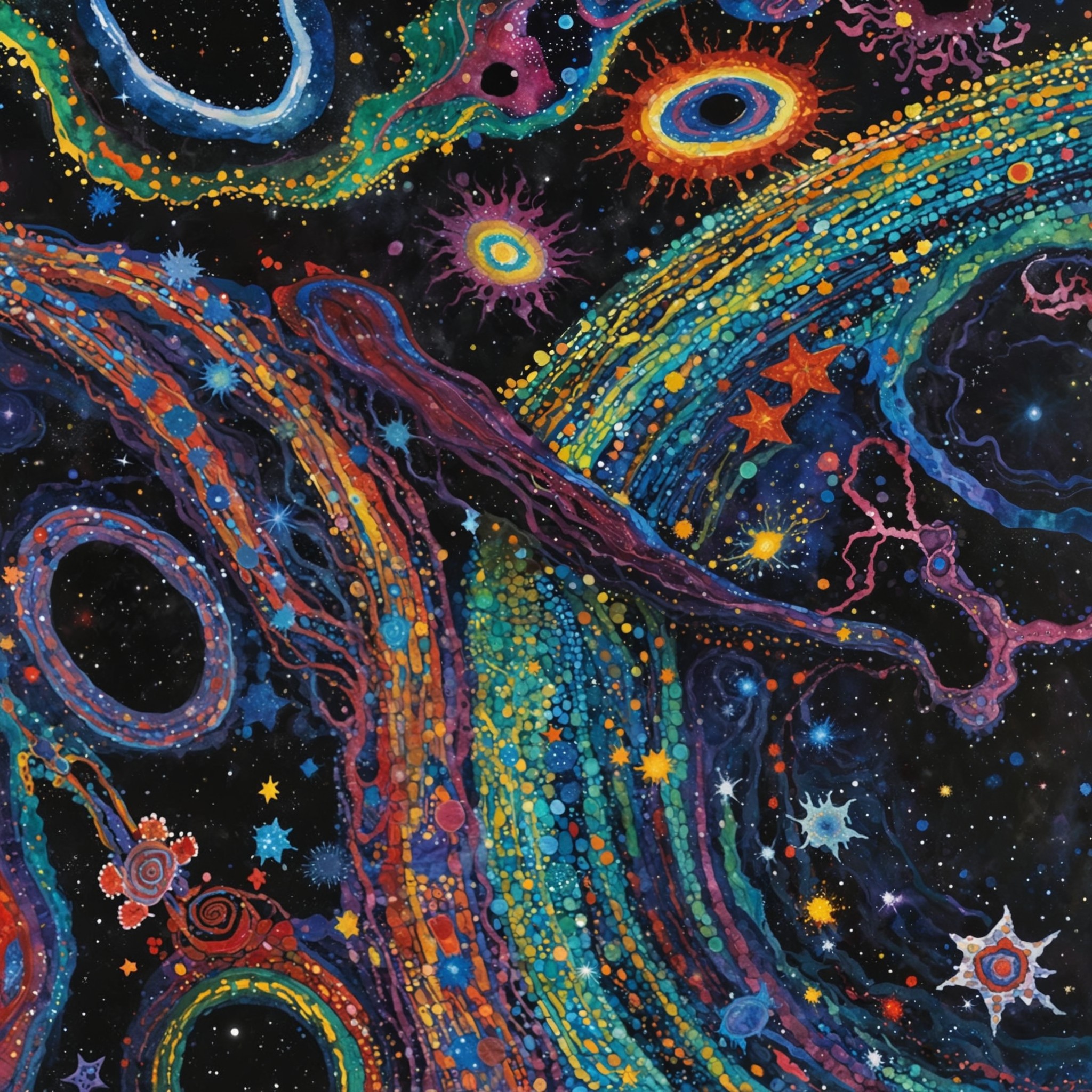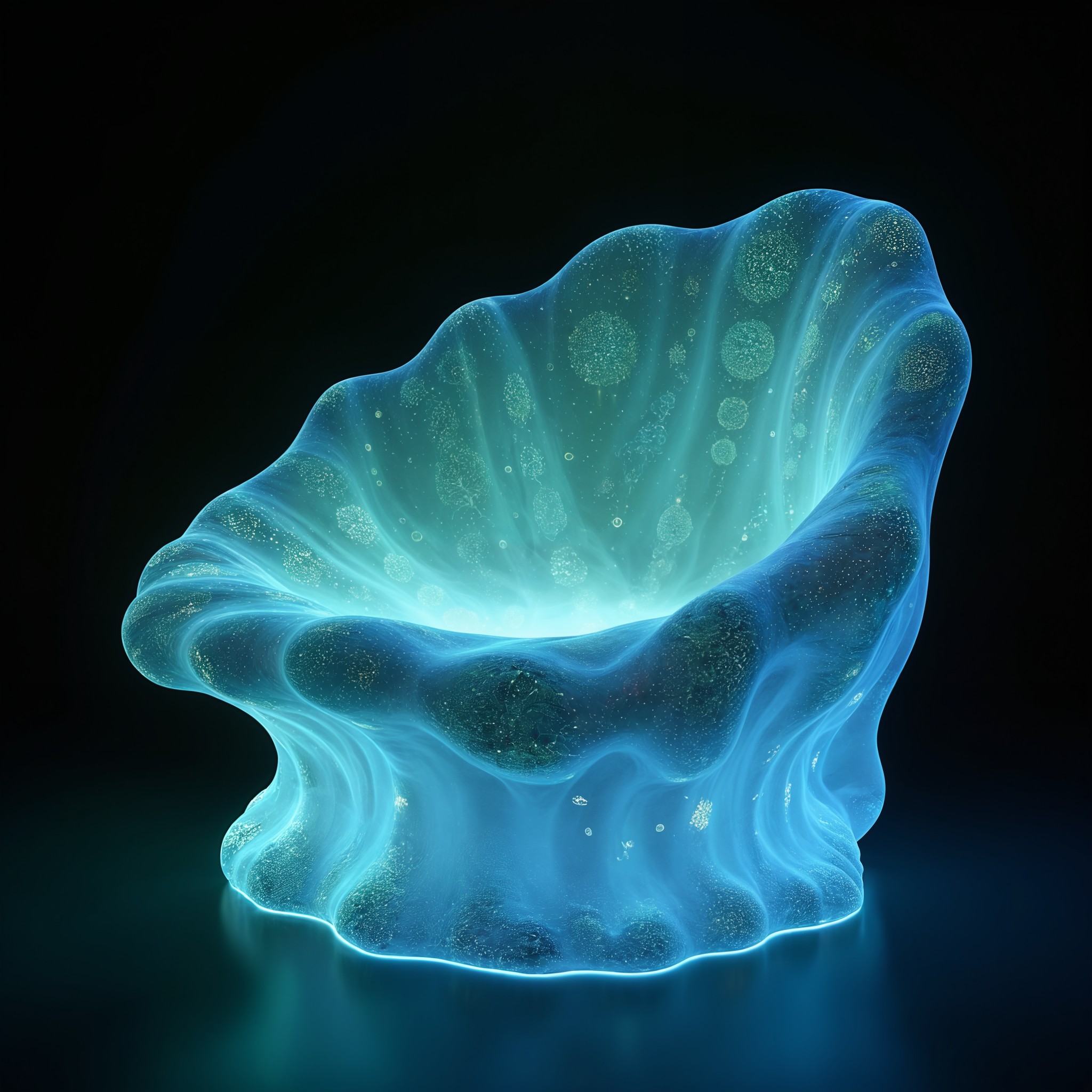date
type
status
slug
summary
tags
category
icon
password
URL
One and Three Objects, and An Attempt at Exhausting the Object
Artists: Ziyang Wu & Shengyu Meng
Year: 2024
Project Overview
This AI-driven artwork reimagines Joseph Kosuth’s One and Three Chairs (1965) and Georges Perec’s An Attempt at Exhausting a Place in Paris (1974) through a posthuman lens. It interrogates the ontology of objects in an era of machine intelligence, exploring how AI redefines materiality, knowledge, and relationality. The project questions whether knowledge production, in a world dominated by precision and speed, can embrace opacity, complexity, and loss of control through computational exhaustion - selectively retrieving abstract or hidden details of objects through recursive textural/image/video generation until contextual comprehension collapses into creative saturation. Each iteration expands the object’s semantic boundaries, revealing AI’s capacity to generate posthuman "abundance" where exhaustion paradoxically births infinite reinterpretations. The work asks: In our efficiency-driven age, what new epistemologies might emerge when we allow algorithmic systems to fail productively?
The project comprises two interconnected phases:
Part I: One and Three Objects
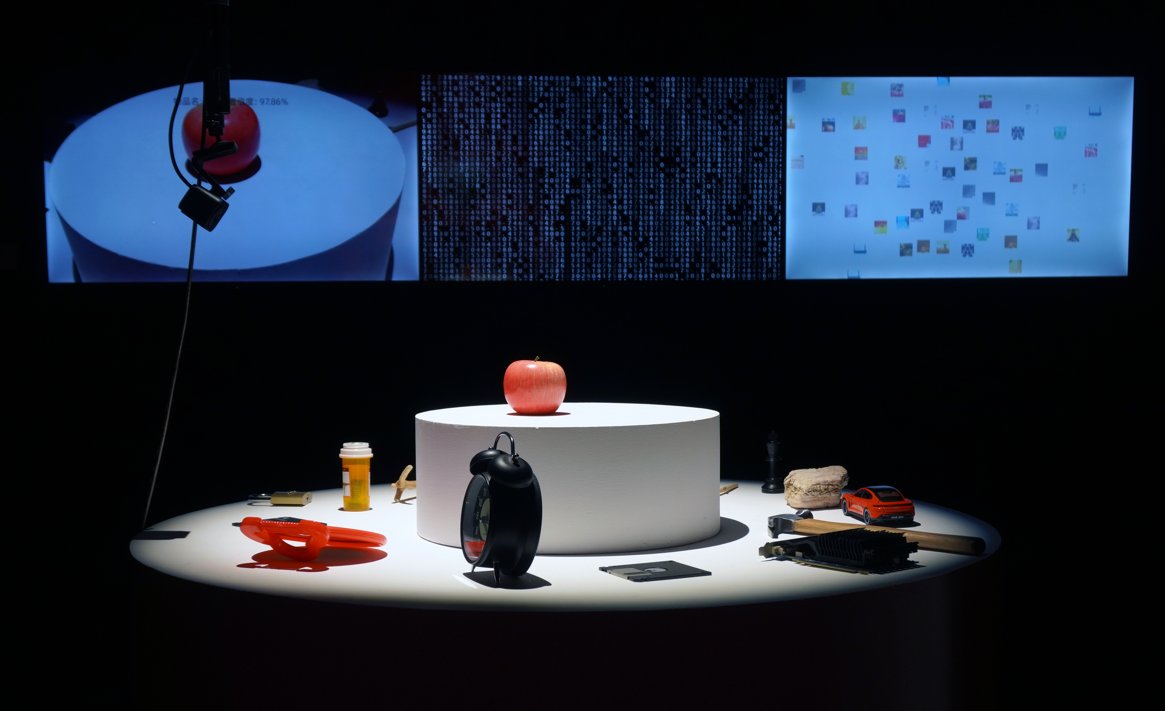
Participants place any physical object (e.g., a hammer, mobile phone, or stone) on a platform. An AI system processes it through:
- Human Visual Understanding: Generating an image of the object.
- Machine Interpretation: Translating it into vector data and metadata.
- Relational Knowledge Graph: Mapping its genealogical, cultural, and contextual entanglements.
Part II: An Attempt at Exhausting the Object

Building on the knowledge graph from Part I, the AI agent embarks on a recursive journey to
unearth the abstract, neglected, or hidden dimensions
of the object. This includes:
- Latent Narratives: Cultural taboos, speculative histories, and fantastical reinterpretations.
- Generative Saturation: The agent produces recursive textural, image, and video outputs until reaching computational exhaustion—a critical threshold where contextual comprehension collapses into creative saturation.
- Semantic Expansion: Each iteration stretches the object’s definitional boundaries, revealing AI’s latent capacity to generate posthuman “abundance”—a paradoxical state where exhaustion births infinite reinterpretations.
Core Questions Explored
- Redefining Objecthood: In a non-anthropocentric world where AI coexists with humans, what constitutes an “object”? How does its definition shift across human and machine ontologies?
- Exhaustion as Abundance: What emerges when AI hits the limits of comprehension? How does computational “exhaustion” redefine creativity, labor, and value in knowledge production?
- Ethics of Opacity: Can algorithmic systems embrace complexity, intimacy, and loss of control—resisting the hegemony of precision and speed—to foster new epistemologies? What might this look like as a counter-model to Silicon Valley’s extractivist frameworks?
Technical Implementation
AI/ML Workflow
- Text Generation: LLMs (Gemma2:27B, Qwen2:7B) decompose objects linguistically, producing nested JSON for knowledge graphs.
- Multimodal Synthesis:
- Images via FLUX. 1 [dev] and DepthFlow for 2.5D animations.
- CLIP-powered object recognition and BERT embeddings for relational mapping.
- Interface: Custom Electron platform with real-time rendering.
Hardware
- Pre-production: RTX 3090 (24GB VRAM).
- Exhibition: RTX 3060 (6GB VRAM) with camera-equipped platform.
Exhibition Context
Commissioned by the Ennova Art Museum, the work invites participatory interaction, blurring boundaries between human curation and machine autonomy. Its recursive outputs manifest as evolving digital fossils—a testament to objects’ fluid identities in the digital age.
Author
Ziyang Wu
Biography:
Ziyang Wu is an artist and curator based in New York and Hangzhou. Wu's practice examines how current technologies, within a cross-cultural context, impact politics, society, and the relationships between things at both macro and micro levels.
Wu's work, spanning video, AR, AI simulation, video games, and interactive video installations, has been exhibited internationally. This includes:
- Solo Exhibitions & Projects: M+ Museum (Hong Kong), How Art Museum (Shanghai), Konschthal Esch (organized by Elektron, Luxembourg), Annka Kultys Gallery (London), Nancy Margolis Gallery (New York), Hatch Art Project (Singapore).
- Group Exhibitions: Institute of Contemporary Art (ICA) Philadelphia, Rhizome at the New Museum, Walker Art Center, Rochester Art Center, PinchukArtCentre, Hek Basel, Konschthal (organized by Elektron) Luxembourg, SIGGRAPH Asia, SXSW, Mesh Festival, Civa Festival, ifa Berlin, Medici Palace, Art Dubai, Annka Kultys Gallery, K11, UCCA Center for Contemporary Art, Long March Space, Today Art Museum, By Art Matters Museum, Song Art Museum, Inside-Out Art Museum, How Art Museum, Times Art Museum, Zhejiang Art Museum, and Ming Contemporary Art Museum.
Fellowships and Residencies:
- Shortlist, "Future Generation Art Prize" (2024)
- "The Randall Chair" award, Alfred University (2022-2023)
- "Kai Wu" Interdisciplinary Studio residency, Media Art Lab, Times Museum (2021)
- AACYF Top 30 under 30 (2021)
- Residency Unlimited (2020)
- MacDowell Fellowship (2019)
- Artist-in-residence, Institute for Electronic Arts (IEA) (2019)
- Art (ists) on the Verge Fellowship, Northern Lights. Mn and Jerome Foundation (2018)
- Finalist, Amassing Force 2017 Wangshikuo Award, Today Art Museum (2017)
- AICAD Teaching Fellowship (2016)
- Winner, The ROCI Road to Peace, Robert Rauschenberg Art Foundation (2015)
Media Coverage:
Wu's work has been reviewed and featured in publications including ArtForum, Artnet, Art Review, Art Newspaper, e-flux, Brooklyn Rail, It’s Nice That, LEAP, Vogue Singapore, Hypebeast, Wall Street International, New York Foundation for the Arts (NYFA), BIE, Heichi Magazine, Numero Art Magazine, Neural Magazine, Vie Des Arts Magazine, ANTE Magazine, Frontrunner Magazine, Stir World Magazine, and more.
Positions:
- Vice Department Head, Open Media Department, School of Intermedia Art, China Academy of Art.
- Adjunct Professor, BFA Fine Art Department, School of Visual Arts.
- Former Member, NEW INC, New Museum.
Education:
- MFA, Rhode Island School of Design.
- BFA, Florence Academy of Fine Arts.
Social Media & Website:
- Instagram: @ziyang_wu_art
- Twitter: @ziyang_wu_art
- Website: https://www.ziyangwu.com
Shengyu Meng
Biography:
Shengyu Meng is an interdisciplinary artist and researcher exploring the symbiosis of human and non-human intelligence through design, AI, ecology, and art. Meng focuses on AI's role in expanding cognitive boundaries and creating new art forms.
Positions:
- Ph. D. Candidate, University of Innsbruck.
- Visiting Lecturer, University College London.
Exhibitions:
- CVPR AI Art Gallery (2024)
- CAS Members' Exhibition (2024)
- ENNOVA Art Biennale (2024)
- Shanghai Design Week (2022)
- Venice-Metaverse Art Annual Exhibition (2022)
- Beijing-Urbanism/Architecture Bi-City Biennale (2022)
- Potenziale³ Exhibition, Tyrol, Austria (2021)
Social Media & Website:
- Twitter: @meng_shengyu
- Instagram: @shengyu_meng
- Website: https://cybergenix.xyz/me
- 作者:Simon Shengyu Meng
- 链接:https://simonsy.net/article/One-and-Three-Objects
- 声明:本文采用 CC BY-NC-SA 4.0 许可协议,转载请注明出处。
相关文章
Worldline Overload {Choose to Patch |or| Forced Reboot}

I have open-sourced an AI bionic product generator: 3D Bionic Designer
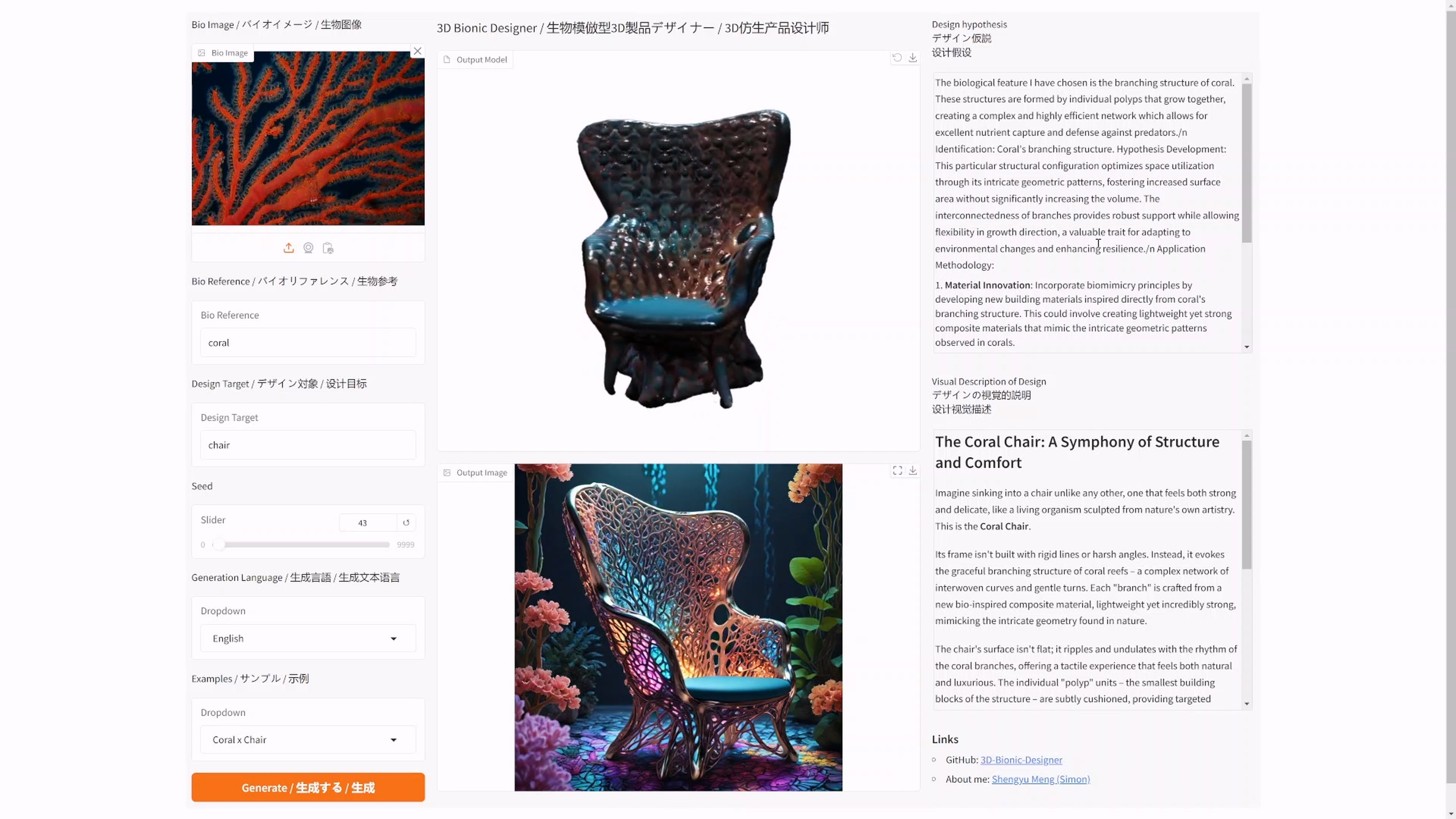
Microcosmic Universe
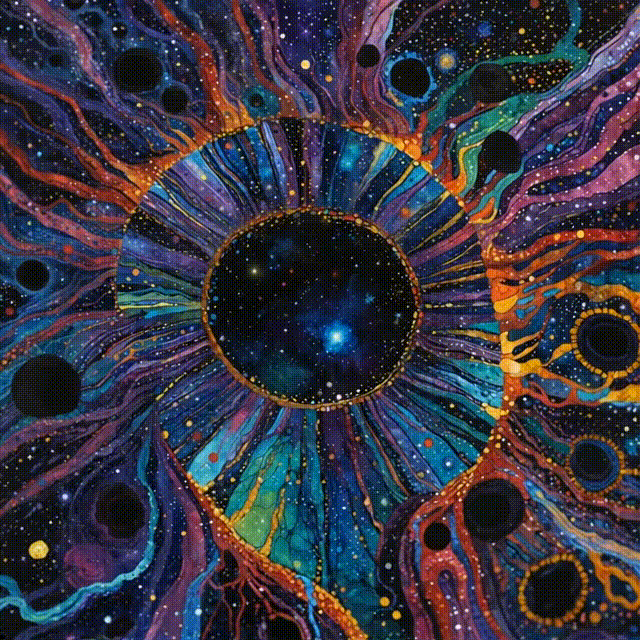
A Book from the Sky

I have open-sourced an AI bionic product generator: 3D Bionic Designer
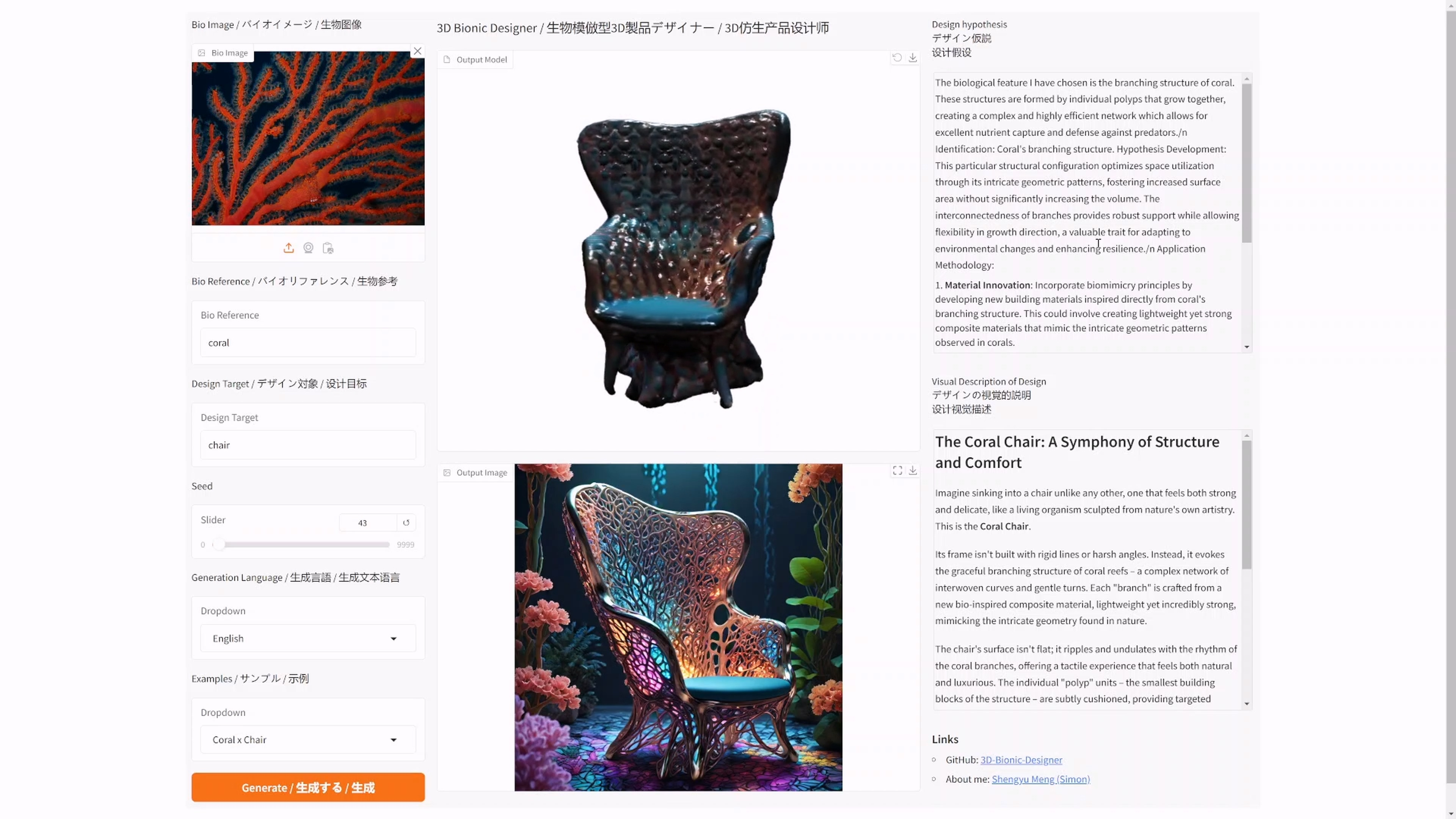
How I Used AI to Create a Promotional Video for Xiaomi's Daniel Arsham Limited Edition Smartphone
